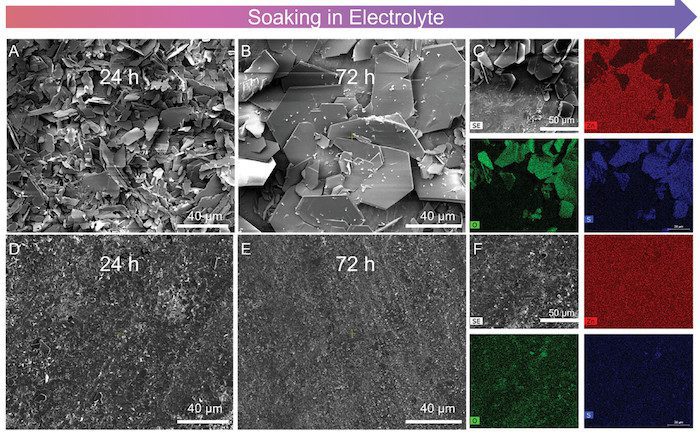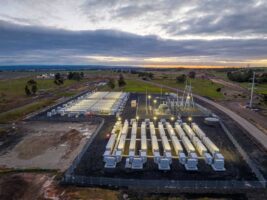Aqueous rechargeable zinc battery (AZB) technology is inching closer to leaving the lab, after researchers in Australia found a way to solve a major corrosion issue.
A glycol electrolyte additive can improve the battery life span by five to 20 times, the equivalent of pushing the lifetime from a few months to more than three years, found a team of researchers from UNSW.
AZBs are another battery technology that is promising for specific applications, such as grid-scale storage, because of its high energy density, low cost, and environmental friendliness – the latter two being issues the incumbent lithium-ion technology doesn’t have a good track record on.
But as with any experimental technology, it comes with some major challenges.
These include a limited choice of cathode options, as many of the options already in the market don’t conduct well with zinc, and the electrolyte itself – the battery needs zinc salts to dissolve into water in order to function, but this very solution also destroys the anode and cathode through side reactions.
The UNSW team wanted to fix zinc dendrite formation, which is when spiky crystals form on the zinc anode and cause the battery to short-circuit.
Their work, published in the Advanced Materials journal, says this process quickly exhausts the finite zinc source while dumping byproducts onto the zinc surface.
The team of researchers from the School of Chemical Engineering, Yuan Shang, Dr. Priyank Kumar, and Dr. Dipan Kundu, spent three years working on the solution, which involved adding small concentrations of organic compounds to the electrolyte.
They found that a 1 per cent concentration of 1,2 butanediol worked the best, and approached the storage capabilities of a Li-ion system.
Although almost all of the research around AZBs indicates its best use is at a grid-scale, Kundu says it could even be used for small applications such as e-bikes given their safety and environmental friendliness.
Whether they could be competitive with existing alternatives however, requires more research.
Currently, research into AZBs shows they’re a viable alternative to large-scale lithium ion batteries with an energy density of between 50–200 Wh/kg, compared to 70–250 Wh/kg, but they don’t have as good power output.
“A safe and affordable AZB technology will accelerate renewable energy integration, enable smart grid technologies for better management of energy distribution, load balancing, and demand response, support the establishment of microgrids powered by renewable energy sources for remote communities, and may provide a cost-effective and reliable storage option for industries like mining, construction, and telecommunications.”
In bushfire-prone Australia, AZBs’ aqueous salt solution electrolyte promises less fire risk than lithium, and it’s abundant, cheap, potentially fully recyclable, and can be made in ambient temperatures rather than in cold rooms.










